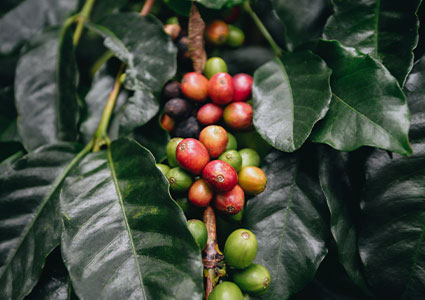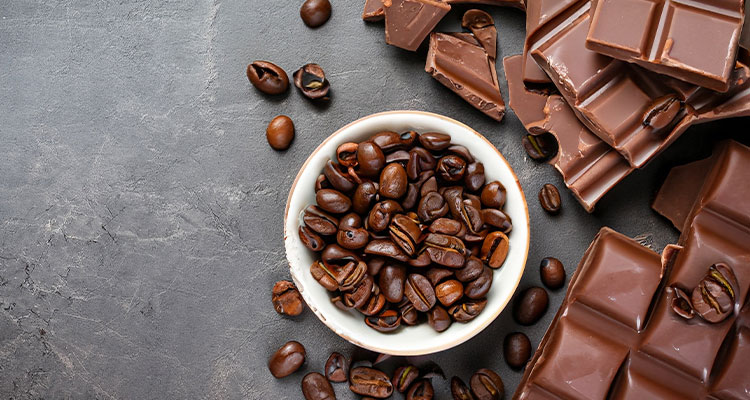How can food producers mitigate the impact of rising ingredient costs?
Since the start of 2024, the global agricultural commodities market has experienced significant volatility. While the price of both coconut and palm oil has risen by more than ten percent, sugar’s price has retreated from the record highs seen towards the end of 2023.

Nevertheless, two key commodities have seen their prices surge, with one recording a record high – coffee and cocoa. The price of coffee has risen sharply since the start of the year, increasing by more than 30 percent during this time. In fact, coffee’s price has been rising at an alarming rate for an extended period, increasing by 67.37 percent in the last year.
However, the increase in coffee prices has been dwarfed by the comparative surge in cocoa costs. London cocoa prices almost touched £10,000/ton in April 2024, an all-time price high for the commodity, which represented an astounding 300 percent price rise year-over-year (YoY).
Given the considerable increases in key ingredient prices, consumers must prepare themselves for increased costs when purchasing cocoa- and coffee-based products.
Coffee costs on the rise
The rise in coffee prices has not gone unnoticed. The recent surge has seen an increase in the cost of a range of products, with coffee shops and producers passing rising costs onto consumers. For example, coffeehouses in London are now charging customers more than £5 for a takeaway cup.
The primary factor driving increasing coffee prices is supply concerns in two key coffee-producing nations – Brazil and Vietnam. Together, these two countries account for 55 percent and 50 percent of global coffee production and exports, respectively.
In March 2024, precipitation levels in Brazil’s Minas Gerais region, which accounts for an estimated 30 percent of the country’s arabica crop, were 235 percent higher compared to the historical average at this time of year. Thereafter, Minas Gerais received no rainfall in April 2024, with the region continuing to experience dryness throughout May too; it is probable that this will damage Brazilian coffee crops.
Meanwhile, the drought conditions in Vietnam, the world’s largest producer of robusta coffee beans, may result in a 20 percent YoY decline in coffee production for the marketing year October 2023 – September 2024, leading to the smallest coffee crop witnessed in the last four years.
What’s more, ongoing concerns relating to coffee supplies have triggered short covering of coffee by investors and traders. This has the potential to keep the commodity’s price elevated in the short term.
Cocoa remains inflated
Although cocoa prices may have dropped in recent weeks – primarily due to delays in purchasing decisions by chocolate companies, as well as the arrival of the mid-cocoa crop from West Africa and the lack of liquidity in the market – the fundamentals of the cocoa market remain bullish. In fact, the market is expected to witness a deficit for the third year in a row for the marketing year October 2024 – September 2025.
The surge in cocoa’s price is largely being driven by continued supply concerns in Ghana and the Ivory Coast – two of the leading cocoa producers in the world. This is having a significant impact on production as these two countries account for an estimated 70 percent of global cocoa output.
The main cause of the decline in regional cocoa production is the extreme weather conditions which have hit West Africa. Initially, unseasonably heavy rains in the area – total precipitation in West Africa during the second half of 2023 was more than double the 30-year average – caused the spread of diseases in cocoa plantations; swollen shoot virus in Ivory Coast and black pod disease in Ghana, leading to crop deterioration. This resulted in around 43 percent of the cocoa-producing area in Ghana being infected with black pod disease, while swollen shoot virus was reported in 11 out of 13 cocoa-growing regions in Ivory Coast.
Subsequently, the region experienced uncharacteristically dry conditions during Q1 2024, caused by the adverse weather associated with the El Niño phenomenon, along with the driest Harmattan winds seen in the last 20 years, further reducing yields. 
Preventing supply disruptions
As a quick fix to mitigate the impact of rising cocoa and coffee prices, food manufacturers have started to transfer the burden of increased commodity input costs to consumers. For instance, the confectionery giant Mondelez has increased its product pricing for 2024 in North America and Europe. However, there are several strategies food manufacturers can deploy to avert supply disruptions and mitigate the impact of rising ingredient costs on products, without raising product prices.
This includes actively evaluating multiple suppliers and assisting their critical vendors. By identifying suppliers in a variety of regions, this reduces the dependence firms have on a single provider or area, particularly if a manufacturer is purchasing a commodity from a territory where output is declining.
Additionally, firms should map supplier dependence. By conducting a comprehensive assessment of exposure to suppliers, organizations can ensure that any drop-off in production doesn’t significantly impact operations. For instance, coffee producers should review their exposure to vendors from Brazil and Vietnam, while chocolatiers can do the same for Ghanaian and Ivorian suppliers.
Elsewhere, to maintain profitability and ensure a steady supply of reasonably priced goods, food producers should also give thought to using artificial intelligence (AI) as part of their business strategies. The technology enables firms to analyze vendor information and establish which is the best fit for their business, based on a range of factors including price, quality and quantity.
As a result of supply constraints and declining production, coffee and cocoa prices are expected to remain elevated in the short to medium term at the very least – with the potential for these price hikes to last for an extended period of time. While market consensus may dictate that to mitigate the impact of these rising ingredient costs, coffee and chocolate producers must pass on rising costs to consumers, a range of alternative solutions is available.
For a list of the sources used in this article, please contact the editor.
Kanica Goel
Kanica Goel is Senior Analyst at The Smart Cube. For leading businesses around the world, The Smart Cube is a trusted partner for high performing intelligence that answers critical business questions. It works with clients to figure out how to implement the answers, faster. Through custom research, advanced analytics and best of breed technology, The Smart Cube transforms data into insights – enabling smart decision-making to improve business performance at the top and bottom line.
